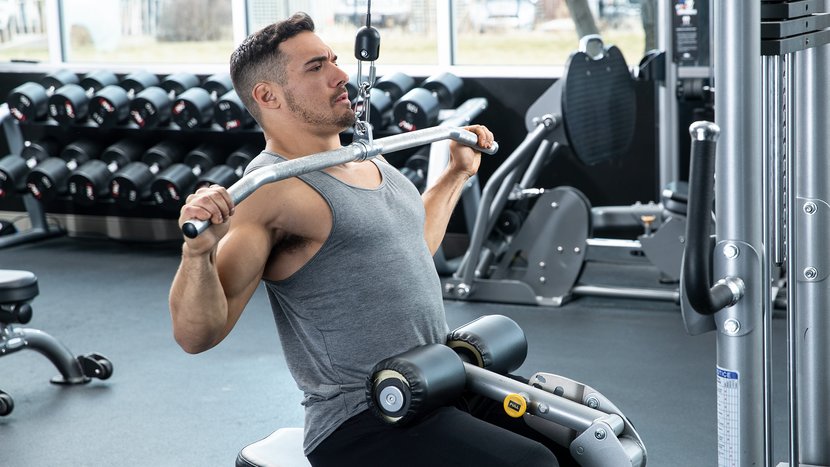Introduction
Many people underestimate the power of strength training for weight loss, thinking cardio is the sole solution. Strength training (also known as resistance training) builds muscle, and muscle is your metabolic engine! More muscle means you burn more calories at rest, making sustainable weight loss and achieving a toned physique more achievable. Let’s demystify the weight room and provide you with the tools to feel confident and see results.
Weight Loss Benefits of Strength Training
Here’s why lifting weights is your fat-loss ally:
- Boosts Metabolism: Muscle tissue burns more calories at rest than fat tissue. Gaining even a small amount of muscle increases your calorie burn throughout the day.
- Improves Body Composition: Strength training helps you build muscle and lose fat simultaneously, creating a leaner, more toned appearance.
- Afterburn Effect (EPOC): Your body continues to burn calories for hours after a strength workout, even while resting.
- Increases Fat Burning: Strength training supports growth hormone and testosterone production, which promote fat loss.
- Empowering & Confidence-Building: Getting stronger is incredibly rewarding and improves self-image as you see your body transform.
Strength Training Basics for Beginners
- Types of Resistance: Free weights (dumbbells, barbells), body weight, machines, and resistance bands all offer effective ways to strength train.
- Focus on Compound Movements: These work multiple muscle groups at once, maximizing calorie burn. Examples include squats, lunges, push-ups, rows, and overhead presses.
- Progressive Overload: Gradually challenging your muscles is key for progress. This can mean increasing weight, reps, or sets over time.
- Proper Form is Essential: Watch tutorial videos or consider a few sessions with a trainer initially to master the basics and prevent injuries.
- Rest & Recovery: Allow muscles 48 hours of rest between sessions targeting the same muscle groups.
Designing Your Strength Training Program
Here’s a beginner-friendly structure to follow:
- Frequency: Start with 2-3 full-body strength sessions per week with at least one rest day in between.
- Warm-Up: 5-10 minutes of light cardio and dynamic stretching (arm circles, torso twists).
- Workout: Choose 5-6 exercises, including a mix of compound movements targeting different muscle groups. Aim for 2-3 sets of 10-15 repetitions each.
- Cool-Down: 5 minutes of static stretching (holding stretches for 30 seconds each).
- Progression: When you can do 15 reps easily, gradually increase resistance (weight or a more challenging variation).
Sample Beginner Workout
IMPORTANT: Consult your doctor beforehand if you have any health concerns. Use lighter weights and focus on proper form initially.
- Squats (or Goblet Squats with a dumbbell)
- Push-ups (can modify on knees if needed)
- Dumbbell Rows (one arm at a time)
- Overhead Press (light dumbbells or a resistance band)
- Plank (hold for 30-60 seconds)
Strength Training Success Tips
- Nutrition Matters: Support muscle building with adequate protein intake. Aim for 1 gram of protein per pound of body weight daily, spread across meals.
- Prioritize Sleep: Lack of sleep reduces muscle recovery and hinders your progress. Aim for 7-8 hours a night.
- Hydrate Well: Water is essential for muscle function and recovery.
- Listen to Your Body: If experiencing pain (not workout soreness), stop and rest. Modify exercises if needed.
- Track Progress: Take measurements and photos initially and periodically thereafter. The scale isn’t always the best indicator of changes.
Understanding Strength Training:
Strength training, also known as resistance training, involves exercises that improve muscular fitness by exercising a muscle or a muscle group against external resistance. It’s not just about lifting weights; it can include a variety of bodyweight exercises, machines, and other equipment.
Benefits of Strength Training for Weight Loss:
- Increased Metabolic Rate: Muscle tissue burns more calories than fat, even at rest.
- Improved Muscle Mass: More muscle mass translates to a higher basal metabolic rate.
- Enhanced Bone Density: Strength training increases bone density and reduces the risk of osteoporosis.
Getting Started:
- Consult a Healthcare Provider: Always check with a healthcare professional before starting any new exercise program.
- Set Realistic Goals: Define clear, achievable goals for your weight loss and fitness journey.
- Learn Proper Form: Proper technique is crucial to prevent injuries and maximize the effectiveness of your workouts.
Designing Your Workout Plan:
- Frequency: Aim for at least two non-consecutive days of strength training per week.
- Intensity: Start with weights or resistance levels that allow you to complete 12-15 repetitions with good form.
- Progression: Gradually increase the weight, frequency, or number of repetitions as your strength improves.
Sample Beginner Strength Training Routine:
- Monday:
- Squats: 3 sets of 12 reps
- Push-ups: 3 sets of 10 reps
- Bent-over Rows: 3 sets of 12 reps
- Wednesday:
- Lunges: 3 sets of 12 reps per leg
- Dumbbell Shoulder Press: 3 sets of 12 reps
- Planks: 3 sets of 30 seconds
- Friday:
- Deadlifts: 3 sets of 12 reps
- Bench Press: 3 sets of 12 reps
- Bicep Curls: 3 sets of 12 reps
Nutrition and Recovery:
- Balanced Diet: Combine your workout routine with a balanced diet rich in protein, complex carbohydrates, and healthy fats.
- Hydration: Drink plenty of water before, during, and after your workouts.
- Rest: Allow adequate recovery time between workouts to repair and build muscle.
- Strength training increases your calorie burn at rest.
- Focus on compound exercises for maximum benefit.
- Prioritize proper form to prevent injuries.
- Gradually increase resistance to see continued progress.
- Combine strength training with a healthy diet, sleep, and hydration for optimal results.
Conclusion
Embracing strength training is a powerful step towards transforming your body composition, burning fat, and feeling your best. Don’t be intimidated by the weights section of the gym! Start with the basics, focus on good form, and gradually challenge yourself. You’ll be amazed at how strong you become and how it positively impacts your weight loss journey.

